The Old Royal Naval College has existed in four different incarnations, these being:-
Greenwich Palace (1498-1694)
Greenwich was one of the most important palaces in Tudor England and was the birthplace of Henry VIII and his daughter, Elizabeth I. The buildings fell into disrepair and were demolished during the English Civil War.
Royal Hospital (1694-1869)
Sir Christopher Wren, at the request of Queen Mary II, produced imposing Baroque designs for a new charitable institution- its mission to care for men who had served in the Royal Navy. The grandiose buildings represented the maritime dominance, wealth and power of Britain.
Royal Naval College (1873-1998)
The college was created to train officers as Britain's navy transitioned from sail to steam power. Nearly 27,000 officers, reserves and WRNS passed through the 'university' during World War II alone.
Today
The site's iconic architecture are now the centre of cultural learning; as a home to both the University of Greenwich and the Laban Conservatoire of Music and Dance. As well as being a popular tourist attraction, music festivals are also held here and the buildings have been used as a film location for several blockbusters.
The most recent of the latter was Victoria and Abdul (2017) which frequently used the magnificent Painted Hall as a backdrop for ceremonial dining- which was the exact purpose it was designed for.
The stunning ceiling was painted by John Thornhill and is considered to be a masterpiece of English Baroque art. The main ceiling depicts both William III and Mary II, the founders of the Royal Hospital and celebrates Britain's commercial and political prosperity and naval power. It is called The Triumph Of Peace And Liberty Over Tyranny and was painted in two stages, between 1708 and 1727.
For over two years the Painted Hall ceiling was being restored, at a cost of £8 million, funded by the National Lottery. The 4,000 square feet of this 'Sistine Chapel of the UK' was faithfully cleaned and visitors could travel 67 steps up scaffolding, to view the ceiling close-up. I was one of them and I promised myself a return visit when the work was completed. Therefore, this is not going to be a long post as I've been here before. Here is the link to that blog:-
As usual, I began my Greenwich day with a walk through the Greenwich Foot Tunnel...
I had a quick look around their Visitors Centre and liked this mock-up of a shipmate's bed...
This lion at the entrance to the Visitor Centre is inspired by a part of the Nelson Pediment (more about that later) which includes a lion roaring in exaltation at Nelson's victories which (judging by this) number 122.
I then got on with the whole point to the day, and ventured into the Painted Hall, which was staffed by very friendly people.
This obelisk was created by students on the 2017-18 Banker Masonry course at the Building Crafts College. It represents stability, with carvings inspired by the Painted Hall.
The entrance roundel, high up in the heavens...
The Triumph Of Peace And Liberty Over Tyranny...
The ends of the design...
They look similar in content but are not the same...
It was very atmospheric and quite peaceful in this spacious room...
You can lie on flat benches and gaze up at William and Mary...
...As well as Sun King Louis XIV being metaphorically kicked to the ground, and all the signs of the zodiac...
Through the archway and my previous blog gives you all the details of what's on the end walls...
From the other end...
Even the floor is striking in design...
Columns...
The Nelson Room was not accessible during my previous visit, due to the restoration work. His body was brought here, having been transported from Spain in a barrel of fortified wine. He was stored here, before lying-in-state in the Upper Hall for over three days. Horatio Nelson is depicted here exactly as he is at the top of Nelson's Column, in Trafalgar Square.
Tourist info...
The skylight in this room adds a bit of atmosphere...
The Nelson pediment is in the King William Court...
It was installed in 1812 and commemorates the death of Admiral Lord Nelson...
It shows a Triton lifting Nelson's body up to Britannia as Neptune follows in his chariot. Personifications of England, Ireland and Scotland mourn the hero whilst the British lion roars on proudly.
Another view of this courtyard...
Excavations which took place in 2017 revealed two service rooms from the old Friary buildings which were a part of Henry VIII's Greenwich Palace.
The unusual niches are thought to be 'bee boles' where bee hives were kept during winter months.
Passage to the Queen Mary Court, which is called the Ripley Tunnel...
The Skittle Alley...
I looked, but refused the guide's kind offer to have a go- my ball control leaves a lot to be desired! I can neither throw, catch or hit a ball, came last in all of my races at school (even when I tried) and once got slung out of PE for being useless!😁😁😁😁
The elegant Queen Mary Undercroft is available for hire...
The view back down the tunnel, which is due to be repaired and redecorated...
The Queen Mary Court, behind the Chapel...
The Chapel. Inside, photographs are forbidden. There was a Good Friday service going on and I stopped for a few moments and witnessed the Eucharist being performed.
Behind this door is the Admiral's House, which is also available for hire.
At the centre of the Grand Square is this statue of George II by John Michael Rysbrack...
This old pump is to one side of the King Charles Court...
Looking past the Water Gate and down the Thames...
Back towards central London...
I nipped back into the painted hall before I left, for one last peek. I'll leave you with a photo of the decorative lights- just because I liked them!
My ticket allows me to return for a year- so return I shall...
TTFN
The Miss Elaineous
XXXXXXXXXXXXXXXXXXXXX
X







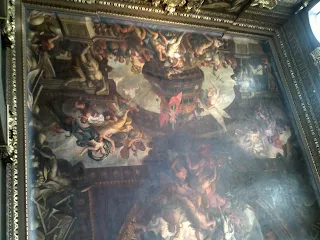








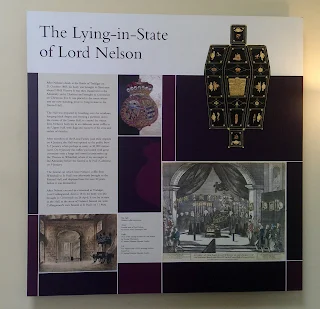

















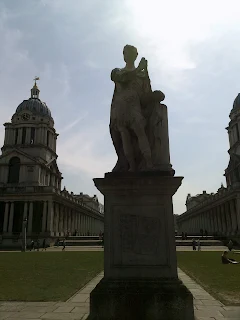
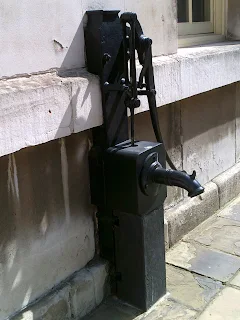
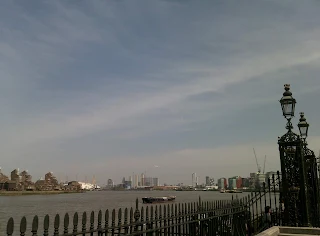


This comment has been removed by a blog administrator.
ReplyDelete